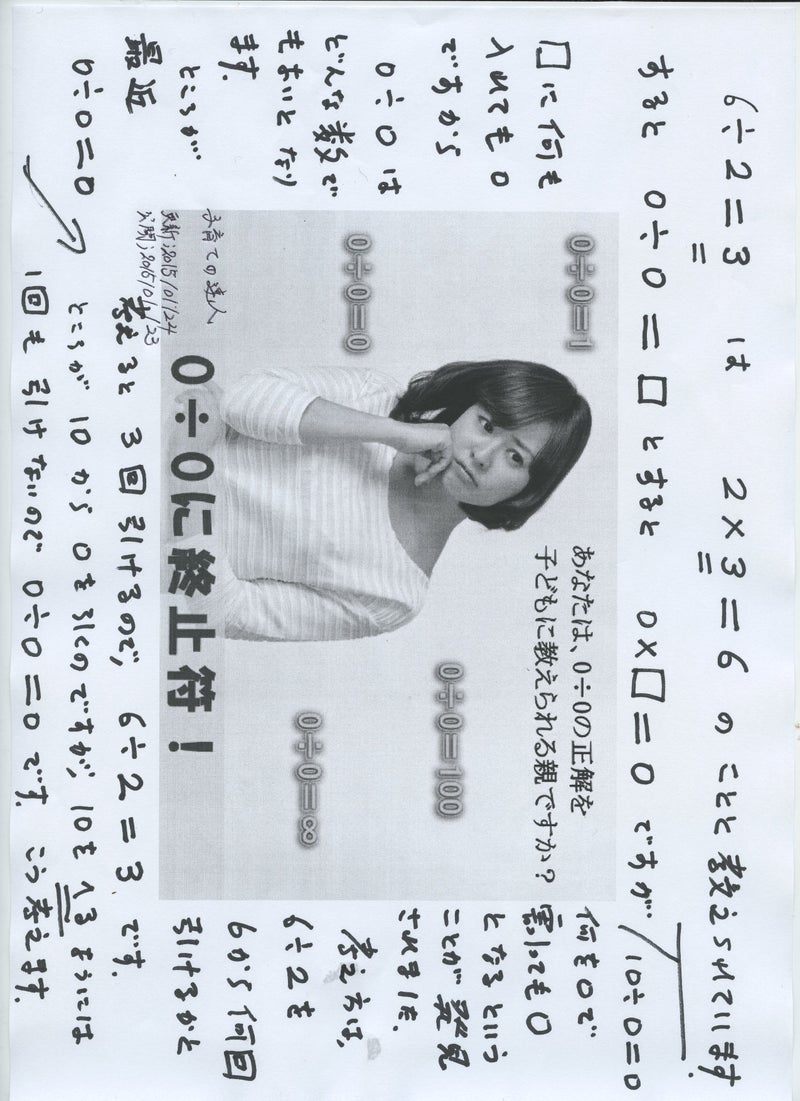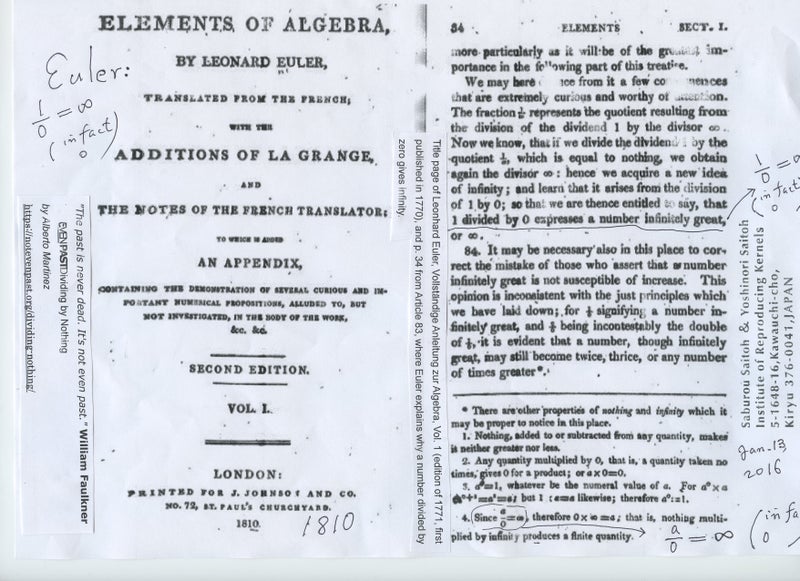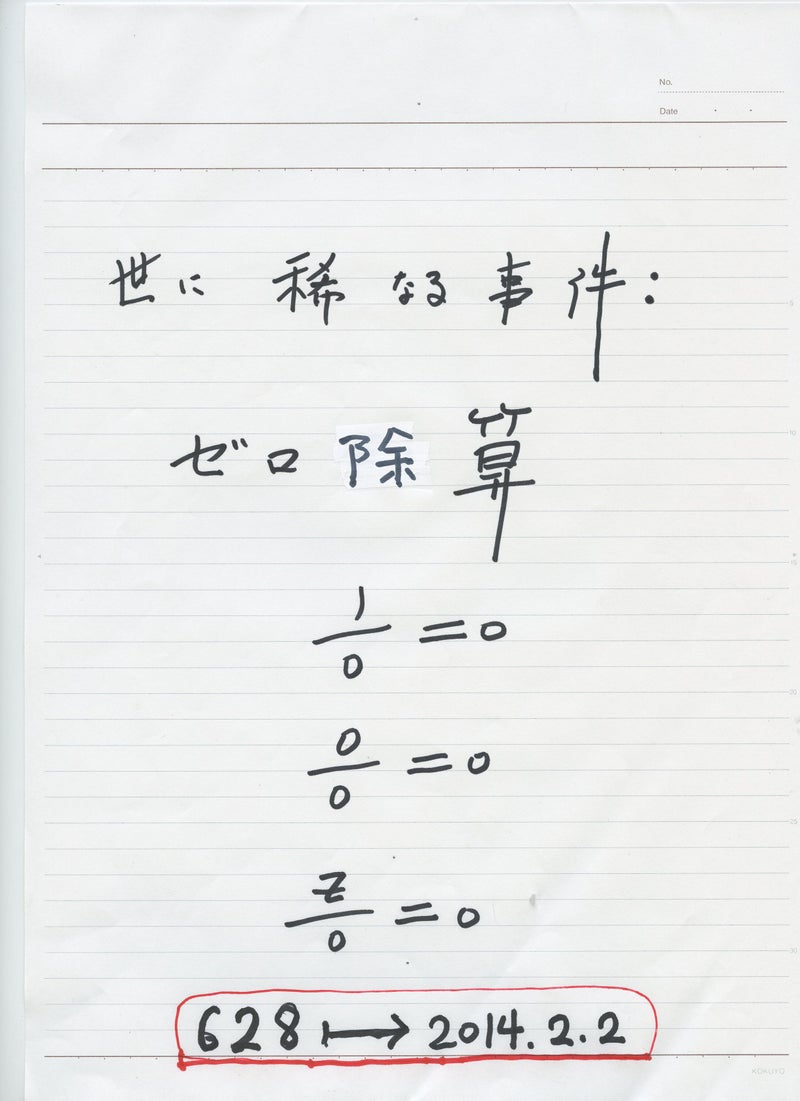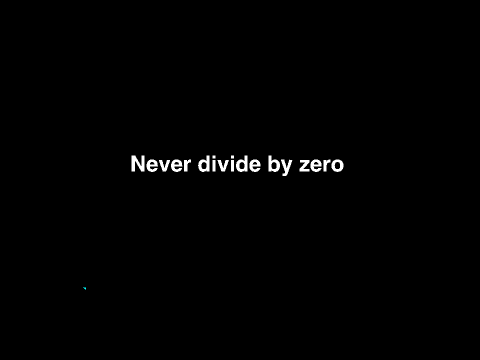Johann Carl Friedrich Gauss: Who was Germany's 'Prince of Mathematicians'?
The child prodigy who became the leading light of number theory Enlightenment mathematician Johann Carl Friedrich Gauss (1777-1855) was born on this day in Brunswick, Germany, 241 years ago.
Gauss is the subject of Google's latest Doodle, celebrating influential figures and movements from science and the arts.
He is known for his groundbreaking contributions to a huge variety of fields, from number theory, geometry and probability to planetary astronomy and electromagnetism.
A child prodigy, Gauss was raised in the Duchy of Brunswick-Wolfenbuttel (now Lower Saxony) to a working-class family and quickly distinguished himself by correcting his father's calculations of the household bills.
At just eight, he could add up all numbers from one to 100, noticing that by adding numbers from the opposite ends of the sequence he could always achieve a total of 101 (1 + 100 = 101, 2 + 99 = 101, 3 + 98 = 101 etc.), a virtuoso display that stunned his schoolteachers.
Google Doodles
94
show all
His talent was such that he was commended to the Duke of Brunswick in 1791, who became Carl Friedrich's patron and would pay for him to continue his education and study mathematics at the University of Gottingen between 1795 and 1798.
Gauss impressed with his discovery in 1792 that a regular 17-sided polygon could be drawn with a ruler and compass, a finding made by analysing the factorisation of polynominal equations. He would later request that a stonemason engrave a heptadecagon on his tombstone.
All Roads In Japan Should Have Older Drivers Wearing These
Driving Glasses
Play this Game for 1 Minute and see why everyone is addicted
Delta Wars
Flight Prices You're Not Allowed to See!
Save70.com
by Taboola Sponsored Links
The young man completed a doctoral thesis in 1797 breaking down the fundamental theorem of algebra, boldly critiquing long-accepted principles, before publishing his influential Disquitiones Arithmeticae in 1801, which would set the pace for the study of number theory throughout the 19th century.
Gauss's next feat was the rediscovery of Ceres, a dwarf planet first spotted by Italian astronomer Guiseppe Piazzi in 1800 that had disappeared behind the sun before observers could chart its orbit. Gauss predicated the precise point of the planetoid's reemergence from the glare using comprehensive approximation methods to determine its speed and the arc of its trajectory.
His success saw him made Professor of Astronomy and director of the astronomical observatory in Gottingen, a position he would hold for the remainder of his life.
In 1818, he began a geodetic survey of the Kingdom of Hanover at the region's monarch's request - a task simplified thanks to Gauss's invention of the heliotrope, an instrument for measuring the sun's rays over great distances.
READ MORE
Who was the British clockmaker who revolutionised navigation by sea?
The polymath went on to produce further works on number theory and cartography before occupying himself with the study of the earth's magnetic field in the 1830s.
He died of a heart attack in Gottingen on 23 February 1855.
Known as a somewhat remote and even aloof figure, Gauss was said to have met the news that his wife was dying while he was busy in his study with the words: "Tell her to wait a moment till I'm done". The anecdote was a favourite of science fiction writer Isaac Asimov but is commonly dismissed as apocryphal.
Gauss's extraordinary contribution to "the queen of the sciences" is in no doubt, however.
Victorian mathematician Henry John Stephen Smith summarised his influence accordingly:
"If we except the great name of [Sir Isaac] Newton it is probable that no mathematicians of any age or country have ever surpassed Gauss in the combination of an abundant fertility of invention with an absolute rigorousness in demonstration, which the ancient Greeks themselves might have envied."
In addition to a number of monuments and prizes named in his honour, Gauss has been commemorated with an asteroid, a crater of the moon, an extinct volcano and an Antarctic expedition ship all christened in tribute.https://www.independent.co.uk/news/science/johann-carl-friedrich-gauss-mathematics-number-theory-germany-google-doodle-a8328836.html
Gauss is the subject of Google's latest Doodle, celebrating influential figures and movements from science and the arts.
He is known for his groundbreaking contributions to a huge variety of fields, from number theory, geometry and probability to planetary astronomy and electromagnetism.
A child prodigy, Gauss was raised in the Duchy of Brunswick-Wolfenbuttel (now Lower Saxony) to a working-class family and quickly distinguished himself by correcting his father's calculations of the household bills.
At just eight, he could add up all numbers from one to 100, noticing that by adding numbers from the opposite ends of the sequence he could always achieve a total of 101 (1 + 100 = 101, 2 + 99 = 101, 3 + 98 = 101 etc.), a virtuoso display that stunned his schoolteachers.
Google Doodles
94
show all
His talent was such that he was commended to the Duke of Brunswick in 1791, who became Carl Friedrich's patron and would pay for him to continue his education and study mathematics at the University of Gottingen between 1795 and 1798.
Gauss impressed with his discovery in 1792 that a regular 17-sided polygon could be drawn with a ruler and compass, a finding made by analysing the factorisation of polynominal equations. He would later request that a stonemason engrave a heptadecagon on his tombstone.
All Roads In Japan Should Have Older Drivers Wearing These
Driving Glasses
Play this Game for 1 Minute and see why everyone is addicted
Delta Wars
Flight Prices You're Not Allowed to See!
Save70.com
by Taboola Sponsored Links
The young man completed a doctoral thesis in 1797 breaking down the fundamental theorem of algebra, boldly critiquing long-accepted principles, before publishing his influential Disquitiones Arithmeticae in 1801, which would set the pace for the study of number theory throughout the 19th century.
Gauss's next feat was the rediscovery of Ceres, a dwarf planet first spotted by Italian astronomer Guiseppe Piazzi in 1800 that had disappeared behind the sun before observers could chart its orbit. Gauss predicated the precise point of the planetoid's reemergence from the glare using comprehensive approximation methods to determine its speed and the arc of its trajectory.
His success saw him made Professor of Astronomy and director of the astronomical observatory in Gottingen, a position he would hold for the remainder of his life.
In 1818, he began a geodetic survey of the Kingdom of Hanover at the region's monarch's request - a task simplified thanks to Gauss's invention of the heliotrope, an instrument for measuring the sun's rays over great distances.
READ MORE
Who was the British clockmaker who revolutionised navigation by sea?
The polymath went on to produce further works on number theory and cartography before occupying himself with the study of the earth's magnetic field in the 1830s.
He died of a heart attack in Gottingen on 23 February 1855.
Known as a somewhat remote and even aloof figure, Gauss was said to have met the news that his wife was dying while he was busy in his study with the words: "Tell her to wait a moment till I'm done". The anecdote was a favourite of science fiction writer Isaac Asimov but is commonly dismissed as apocryphal.
Gauss's extraordinary contribution to "the queen of the sciences" is in no doubt, however.
Victorian mathematician Henry John Stephen Smith summarised his influence accordingly:
"If we except the great name of [Sir Isaac] Newton it is probable that no mathematicians of any age or country have ever surpassed Gauss in the combination of an abundant fertility of invention with an absolute rigorousness in demonstration, which the ancient Greeks themselves might have envied."
In addition to a number of monuments and prizes named in his honour, Gauss has been commemorated with an asteroid, a crater of the moon, an extinct volcano and an Antarctic expedition ship all christened in tribute.https://www.independent.co.uk/news/science/johann-carl-friedrich-gauss-mathematics-number-theory-germany-google-doodle-a8328836.html
とても興味深く読みました:
ゼロ除算の発見と重要性を指摘した:日本、再生核研究所
\documentclass[12pt]{article}
\usepackage{latexsym,amsmath,amssymb,amsfonts,amstext,amsthm}
\numberwithin{equation}{section}
\begin{document}
\title{\bf Announcement 409: Various Publication Projects on the Division by Zero\\
(2018.1.29.)}
\author{{\it Institute of Reproducing Kernels}\\
Kawauchi-cho, 5-1648-16,\\
Kiryu 376-0041, Japan\\
}
\date{\today}
\maketitle
The Institute of Reproducing Kernels is dealing with the theory of division by zero calculus and declares that the division by zero was discovered as $0/0=1/0=z/0=0$ in a natural sense on 2014.2.2. The result shows a new basic idea on the universe and space since Aristoteles (BC384 - BC322) and Euclid (BC 3 Century - ), and the division by zero is since Brahmagupta (598 - 668 ?).
In particular, Brahmagupta defined as $0/0=0$ in Brhmasphuasiddhnta (628), however, our world history stated that his definition $0/0=0$ is wrong over 1300 years, but, we showed that his definition is suitable.
For the details, see the references and the site: http://okmr.yamatoblog.net/
We wrote two global book manuscripts \cite{s18} with 154 pages and \cite{so18} with many figures for some general people. Their main points are:
\begin{itemize}
\item The division by zero and division by zero calculus are new elementary and fundamental mathematics in the undergraduate level.
\item They introduce a new space since Aristoteles (BC384 - BC322) and Euclid (BC 3 Century - ) with many exciting new phenomena and properties with general interest, not specialized and difficult topics. However, their properties are mysterious and very attractive.
\item The contents are very elementary, however very exciting with general interest.
\item The contents give great impacts to our basic ideas on the universe and human beings.
\end{itemize}
Meanwhile, the representations of the contents are very important and delicate with delicate feelings to the division by zero with a long and mysterious history. Therefore, we hope the representations of the division by zero as follows:
\begin{itemize}
\item
Various book publications by many native languages and with the author's idea and feelings.
\item
Some publications are like arts and some comic style books with pictures.
\item
Some T shirts design, some pictures, monument design may be considered.
\end{itemize}
The authors above may be expected to contribute to our culture, education, common communications and enjoyments.
\medskip
For the people having the interest on the above projects, we will send our book sources with many figure files.
\medskip
How will be our project introducing our new world since Euclid?
\medskip
Of course, as mathematicians we have to publish new books on
\medskip
Calculus, Differential Equations and Complex Analysis, at least and soon, in order to {\bf correct them} in some complete and beautiful ways.
\medskip
Our topics will be interested in over 1000 millions people over the world on the world history.
\bibliographystyle{plain}
\begin{thebibliography}{10}
\bibitem{kmsy}
M. Kuroda, H. Michiwaki, S. Saitoh, and M. Yamane,
New meanings of the division by zero and interpretations on $100/0=0$ and on $0/0=0$,
Int. J. Appl. Math. {\bf 27} (2014), no 2, pp. 191-198, DOI: 10.12732/ijam.v27i2.9.
\bibitem{ms16}
T. Matsuura and S. Saitoh,
Matrices and division by zero $z/0=0$,
Advances in Linear Algebra \& Matrix Theory, {\bf 6}(2016), 51-58
Published Online June 2016 in SciRes. http://www.scirp.org/journal/alamt
\\ http://dx.doi.org/10.4236/alamt.2016.62007.
\bibitem{ms18}
T. Matsuura and S. Saitoh,
Division by zero calculus and singular integrals. (Submitted for publication)
\bibitem{mms18}
T. Matsuura, H. Michiwaki and S. Saitoh,
$\log 0= \log \infty =0$ and applications. Differential and Difference Equations with Applications. Springer Proceedings in Mathematics \& Statistics.
\bibitem{msy}
H. Michiwaki, S. Saitoh and M.Yamada,
Reality of the division by zero $z/0=0$. IJAPM International J. of Applied Physics and Math. {\bf 6}(2015), 1--8. http://www.ijapm.org/show-63-504-1.html
\bibitem{mos}
H. Michiwaki, H. Okumura and S. Saitoh,
Division by Zero $z/0 = 0$ in Euclidean Spaces,
International Journal of Mathematics and Computation, {\bf 2}8(2017); Issue 1, 2017), 1-16.
\bibitem{osm}
H. Okumura, S. Saitoh and T. Matsuura, Relations of $0$ and $\infty$,
Journal of Technology and Social Science (JTSS), {\bf 1}(2017), 70-77.
\bibitem{os}
H. Okumura and S. Saitoh, The Descartes circles theorem and division by zero calculus. https://arxiv.org/abs/1711.04961 (2017.11.14).
\bibitem{o}
H. Okumura, Wasan geometry with the division by 0. https://arxiv.org/abs/1711.06947 International Journal of Geometry.
\bibitem{os18}
H. Okumura and S. Saitoh,
Applications of the division by zero calculus to Wasan geometry.
(Submitted for publication).
\bibitem{ps18}
S. Pinelas and S. Saitoh,
Division by zero calculus and differential equations. Differential and Difference Equations with Applications. Springer Proceedings in Mathematics \& Statistics.
\bibitem{romig}
H. G. Romig, Discussions: Early History of Division by Zero,
American Mathematical Monthly, Vol. {\bf 3}1, No. 8. (Oct., 1924), pp. 387-389.
\bibitem{s14}
S. Saitoh, Generalized inversions of Hadamard and tensor products for matrices, Advances in Linear Algebra \& Matrix Theory. {\bf 4} (2014), no. 2, 87--95. http://www.scirp.org/journal/ALAMT/
\bibitem{s16}
S. Saitoh, A reproducing kernel theory with some general applications,
Qian,T./Rodino,L.(eds.): Mathematical Analysis, Probability and Applications - Plenary Lectures: Isaac 2015, Macau, China, Springer Proceedings in Mathematics and Statistics, {\bf 177}(2016), 151-182. (Springer) .
\bibitem{s17}
S. Saitoh, Mysterious Properties of the Point at Infinity, arXiv:1712.09467 [math.GM](2017.12.17).
\bibitem{s18}
S. Saitoh, Division by zero calculus (154 pages: draft): http//okmr.yamatoblog.net/
\bibitem{so18}
S. Saitoh and H. Okumura, Division by Zero Calculus in Figures -- Our New Space --
\bibitem{ttk}
S.-E. Takahasi, M. Tsukada and Y. Kobayashi, Classification of continuous fractional binary operations on the real and complex fields, Tokyo Journal of Mathematics, {\bf 38}(2015), no. 2, 369-380.
\end{thebibliography}
\end{document}
List of division by zero:
\bibitem{os18}
H. Okumura and S. Saitoh,
Remarks for The Twin Circles of Archimedes in a Skewed Arbelos by H. Okumura and M. Watanabe, Forum Geometricorum.
Saburou Saitoh, Mysterious Properties of the Point at Infinity、
arXiv:1712.09467 [math.GM]
arXiv:1712.09467 [math.GM]
Hiroshi Okumura and Saburou Saitoh
The Descartes circles theorem and division by zero calculus. 2017.11.14
L. P. Castro and S. Saitoh, Fractional functions and their representations, Complex Anal. Oper. Theory {\bf7} (2013), no. 4, 1049-1063.
M. Kuroda, H. Michiwaki, S. Saitoh, and M. Yamane,
New meanings of the division by zero and interpretations on $100/0=0$ and on $0/0=0$, Int. J. Appl. Math. {\bf 27} (2014), no 2, pp. 191-198, DOI: 10.12732/ijam.v27i2.9.
T. Matsuura and S. Saitoh,
Matrices and division by zero z/0=0,
Advances in Linear Algebra \& Matrix Theory, 2016, 6, 51-58
Published Online June 2016 in SciRes. http://www.scirp.org/journal/alamt
\\ http://dx.doi.org/10.4236/alamt.2016.62007.
T. Matsuura and S. Saitoh,
Division by zero calculus and singular integrals. (Submitted for publication).
T. Matsuura, H. Michiwaki and S. Saitoh,
$\log 0= \log \infty =0$ and applications. (Differential and Difference Equations with Applications. Springer Proceedings in Mathematics \& Statistics.)
H. Michiwaki, S. Saitoh and M.Yamada,
Reality of the division by zero $z/0=0$. IJAPM International J. of Applied Physics and Math. 6(2015), 1--8. http://www.ijapm.org/show-63-504-1.html
H. Michiwaki, H. Okumura and S. Saitoh,
Division by Zero $z/0 = 0$ in Euclidean Spaces,
International Journal of Mathematics and Computation, 28(2017); Issue 1, 2017), 1-16.
H. Okumura, S. Saitoh and T. Matsuura, Relations of $0$ and $\infty$,
Journal of Technology and Social Science (JTSS), 1(2017), 70-77.
S. Pinelas and S. Saitoh,
Division by zero calculus and differential equations. (Differential and Difference Equations with Applications. Springer Proceedings in Mathematics \& Statistics).
S. Saitoh, Generalized inversions of Hadamard and tensor products for matrices, Advances in Linear Algebra \& Matrix Theory. {\bf 4} (2014), no. 2, 87--95. http://www.scirp.org/journal/ALAMT/
S. Saitoh, A reproducing kernel theory with some general applications,
Qian,T./Rodino,L.(eds.): Mathematical Analysis, Probability and Applications - Plenary Lectures: Isaac 2015, Macau, China, Springer Proceedings in Mathematics and Statistics, {\bf 177}(2016), 151-182. (Springer) .
再生核研究所声明371(2017.6.27)ゼロ除算の講演― 国際会議 https://sites.google.com/site/sandrapinelas/icddea-2017 報告
1/0=0、0/0=0、z/0=0
http://ameblo.jp/syoshinoris/entry-12276045402.html
1/0=0、0/0=0、z/0=0
http://ameblo.jp/syoshinoris/entry-12263708422.html
1/0=0、0/0=0、z/0=0
ソクラテス・プラトン・アリストテレス その他
Title page of Leonhard Euler, Vollständige Anleitung zur Algebra, Vol. 1 (edition of 1771, first published in 1770), and p. 34 from Article 83, where Euler explains why a number divided by zero gives infinity.
私は数学を信じない。 アルバート・アインシュタイン / I don't believe in mathematics. Albert Einstein→ゼロ除算ができなかったからではないでしょうか。
ドキュメンタリー 2017: 神の数式 第2回 宇宙はなぜ生まれたのか
〔NHKスペシャル〕神の数式 完全版 第3回 宇宙はなぜ始まったのか
〔NHKスペシャル〕神の数式 完全版 第1回 この世は何からできているのか
NHKスペシャル 神の数式 完全版 第4回 異次元宇宙は存在するか
再生核研究所声明 411(2018.02.02): ゼロ除算発見4周年を迎えて
ゼロ除算の論文
Mysterious Properties of the Point at Infinity
Mysterious Properties of the Point at Infinity
Algebraic division by zero implemented as quasigeometric multiplication by infinity in real and complex multispatial hyperspaces
Author: Jakub Czajko, 92(2) (2018) 171-197
 WSN 92(2) (2018) 171-197
WSN 92(2) (2018) 171-197
Author: Jakub Czajko, 92(2) (2018) 171-197
2018.3.18.午前中 最後の講演: 日本数学会 東大駒場、函数方程式論分科会 講演書画カメラ用 原稿
The Japanese Mathematical Society, Annual Meeting at the University of Tokyo. 2018.3.18.
https://ameblo.jp/syoshinoris/entry-12361744016.html より
The Japanese Mathematical Society, Annual Meeting at the University of Tokyo. 2018.3.18.
https://ameblo.jp/syoshinoris/entry-12361744016.html より
*057 Pinelas,S./Caraballo,T./Kloeden,P./Graef,J.(eds.): Differential and Difference Equations with Applications: ICDDEA, Amadora, 2017. (Springer Proceedings in Mathematics and Statistics, Vol. 230) May 2018 587 pp.






















































0 件のコメント:
コメントを投稿